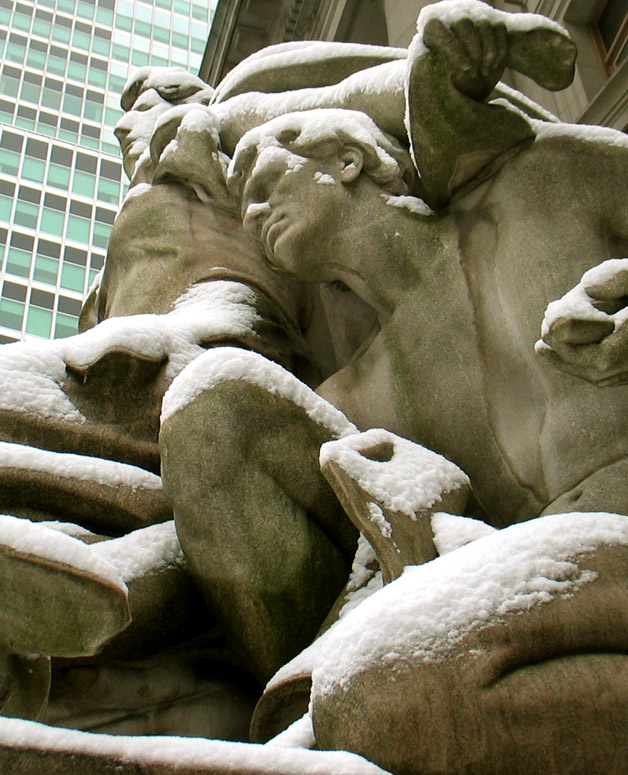 |
|
On a wall of the J.P. Morgan & Co. building, just across from the Stock Exchange, you can see the scars from a terrible event. A bomb was detonated just before noon on September 16, 1920. It was probably left by an anarchist; this note was found just before the 100 pounds of dynamite exploded:
"Remember we will not tolerate any longer. Free the political prisoners or it will be sure death for all ofyou. American Anarchists Fighters."
It was a gruesome scene, 33 died, about 400 wounded. Despite an extensive investigation, nobody was ever charged with the crime. |
|
 |
| Today, you can still clearly see the pock marks from the blast on the wall of the building. |
 |
| In spite of the awfulness of this event, I'm fascinated by places where you can see a physical mark on the landscape caused by historical events. (Another good example is the Bowling Green fence, where you can see 200 year old saw-marks- look on the 'Bowling Green' page of this site.) |
| |
| Wall Street is still a place where people feel threatened. Right across the street, heavily-armed police are permanently stationed, guarding the Stock Exchange. |
|
|
There are a lot of things in Manhattan that look like historic cast-iron, but are really modern reproductions. Most of the street lamps that look like cast-iron, for example, are not. The Wall Street subway entrance on the 4 & 5 train is the real deal. It was designed by George Heins and Christopher Grant LaFarge, and is a century-old remnant of the original 1904 Subway. |
 |
| |
|
| |
| This is the southern end of Broadway. I love looking up into Manhattan from here- the beginnings of the tall, narrow, dark urban canyons. This is where they give the ticker tape parades- like this one, on the right, for golfer Bobby Jones in 1926. That curving building on the right, below, is the Standard Oil Building. A friend of mine pointed out how the bottom of the building curves to conform to the contours of the old cow-path streets of the Dutch, while the top of the building (with the scaffolding) twists to align itself with the rigid grid of upper Manhattan. |
 |
| |
|
| |
 |
|
|
|
|
 |
|

